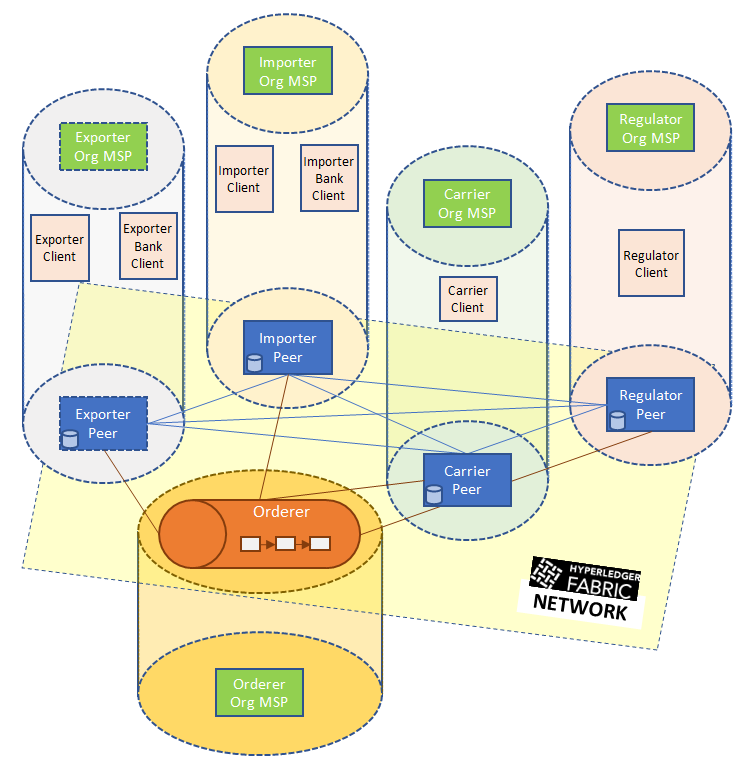The first step in determining a Hyperledger Fabric network structure for one's application is listing the participating organizations. Logically, an organization is a security domain and a unit of identity and credentials. It governs one or more network peers, and depends on a membership service provider (MSP) to issue identities and certificates for the peers as well as clients for smart contract access privileges. The ordering service, which is the cornerstone of a Fabric network, is typically assigned its own organization. The following diagram illustrates a typical peer network structure with clients, MSPs, and logical organization groupings.
The criterion for the approval of a transaction (or invocation) is an endorsement policy (which we will revisit later in this chapter). It is framed in terms of the organizations that are participating in the application network, and not the peers themselves:

The set of peers, the organizations they belong to, and the membership service providers serving each organization must be decided beforehand so that the appropriate services can be installed and run on those machines.
Our sample trade network will consist of four organizations, representing the exporter, importer, carrier, and regulator, respectively. The latter two represent the carrier and regulator entities, respectively. The exporter organization, however, represents both the exporting entity and its bank. Similarly, the importer organization represents the importing entity and its bank. Grouping entities with parties they trust into a single organization makes sense from both the perspective of security and cost. Running a Fabric peer is a heavy and costly business, so it is sufficient for a bank, which likely has more resources and a large clientele, to run such a peer on behalf of itself and its clients. A trading entity obtains the right to submit transactions or read the ledger state from its organizations in the role of a client. Our blockchain network therefore needs four peers, each belonging to a different organization. Apart from the peers, our network consists of one MSP for each of the four organizations, and an ordering service running in solo mode.
The ordering service belongs to its own separate organization with an MSP. The Organizations with their MSPs, peers, and clients of our trading network are illustrated in the following diagram:

- Embedding access control logic in the middleware and application layers (which we will describe later in this chapter), whereby users can be distinguished by their IDs (or login names) and an access control list mapping IDs to permitted chaincode functions is maintained.
- Having an organization’s MSP, acting as a CA server, embed distinguishing attributes within the certificates it issues to members of an organization. The access control logic can be implemented in the middleware or even in the chaincode to parse the attributes and permit or disallow an operation as per application policy.
These mechanisms are not implemented in our application, in which bankers and clients are indistinguishable to the smart contract and the middleware layers. But the reader may treat this as an exercise, which should be straightforward for someone skilled at developing secure client-server applications.
